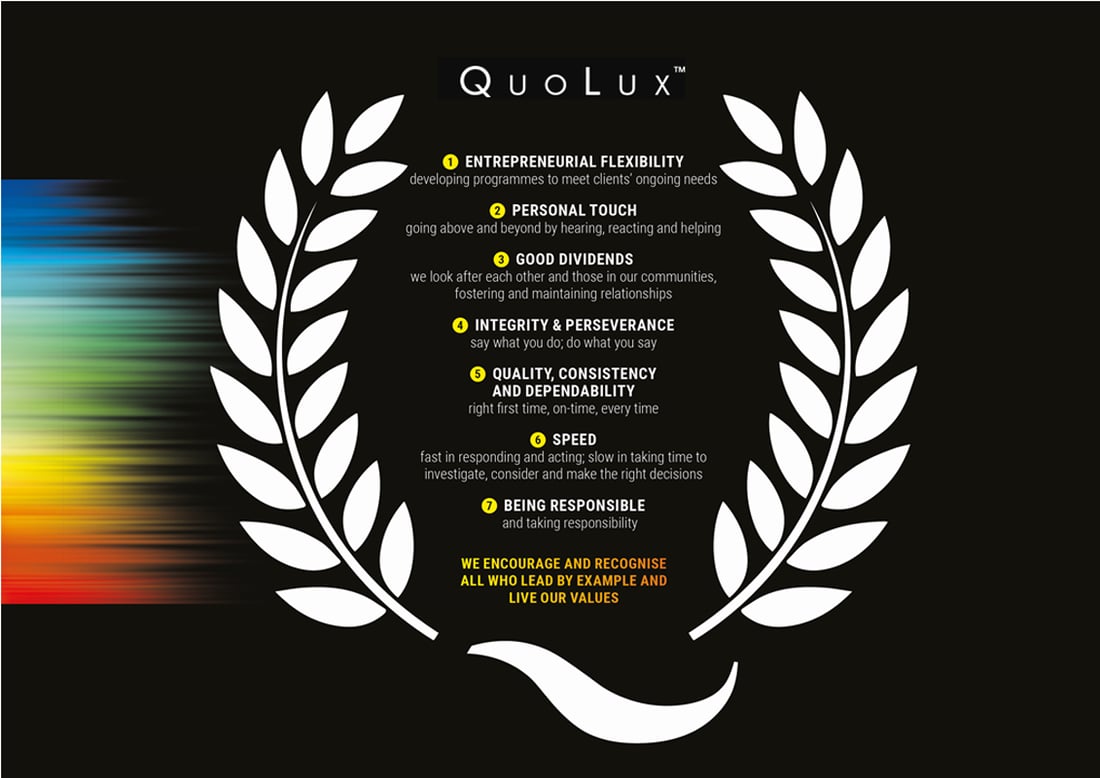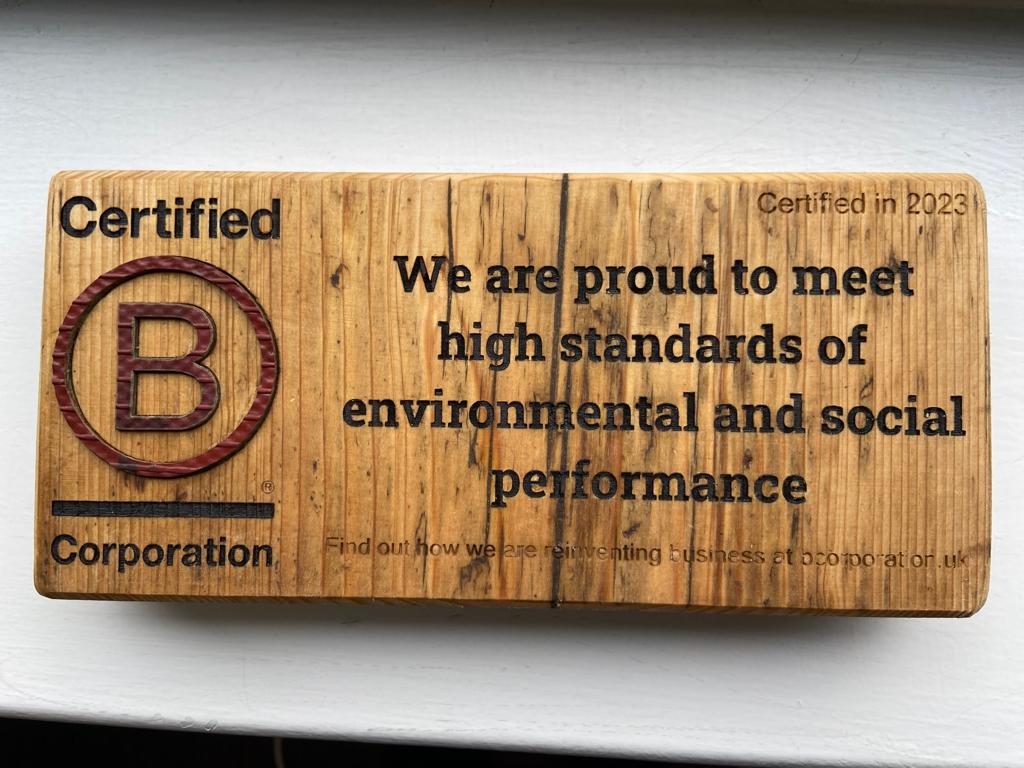QuoLux™ is a family business with a twist as it is mostly non-family blood pumping through the company’s veins as mainly it is the in-laws that work in the organisation.
Through our consultancy arm we do a lot of work with businesses, both family and non-family, on culture and establishing values, which gives us a great insight into considering the similarities and differences between the personality, beliefs and philosophy of different types of companies under different types of ownership.
One of our LEAD™ Masterclass speakers, former CEO of Leyland Truck, John Oliver OBE, stresses the importance of establishing values as they drive the entire business ethos at all levels. Employees who identify strongly with company values demonstrate higher levels of engagement and job satisfaction, which in turn leads to increased productivity and overall performance.
For all types of organisations, the values that are created must not be a series of bland statements hanging on a wall containing words that are not any different from one firm to the next. If you have values, here’s a short exercise – put your hand across your logo so that only the values can be seen. Do they look like they apply to any company? If so, rip them up. Now, with your senior leadership team, take some time out to create a set of values that will permeate through every activity in your company so that they reflect the way that you do business.
Here we share five steps for creating and embedding values into your organisation:
Step 1: Senior leaders should first spend time formulating what they believe the firm’s core values to be. Initially the process of creating company values should be led by the senior leadership team as without ‘buy-in from the top’, it will never get off the ground.
Step 2: The next step is to engage with employees across the business to seek their views on the proposed values. ‘Brainstorm’ the proposed values and ask them what they think the company stands for and the values they feel should govern the way that people interact with colleagues, clients, suppliers etc. If you have a lot of employees then you may need to invite representatives from the various teams / departments to take part in group discussions in order to ensure that opinions are gathered from across the organisation.
Note - this step is very important – if your employees don’t feel that they have been included and their voices heard, then they are likely to feel distrustful of the entire process.
Step 3: Research shows that when employees know and understand their company values, they are 51 times more likely to be “fully engaged” at work. (Source Modern Survey). So to avoid ending up with a list of generic words, take time to discuss, define and agree what each value means. You can then agree those personal qualities that individuals and managers need to display in their every day job to achieve these core values.
Step 4: Create one UNITED leadership team behind these values and the attendant beliefs, attitudes and behaviour. The views, opinions and behaviours of those in leadership positions are the key contributing elements to the ultimate culture. If they say one thing and do another, they are immediately going to undermine the culture and performance. So make sure that your leaders / managers are leading by example and demonstrating the values and behaviours that you have agreed.
Step 5: Embed these values progressively into every element of working life to ensure this becomes a living philosophy not a ‘wish list on the wall’.
At QuoLux™ we have 7 values that we live by:

At the start of every monthly meeting we go around the table and all attendees give an example of how they have lived one of the values or share how they have observed a colleague live the values. It is a great way to get everyone to consider what the values mean to them in the roles they are doing in the business. i.e. the values are contextualised. By living the values and discussing them regularly we are all learning how to use them and ensure that they are reflected in the way we do business with each other and with our clients and other stakeholders.
How do you live your values?
Keep up-to-date on the latest leadership and management tips by signing up to our weekly blog here




